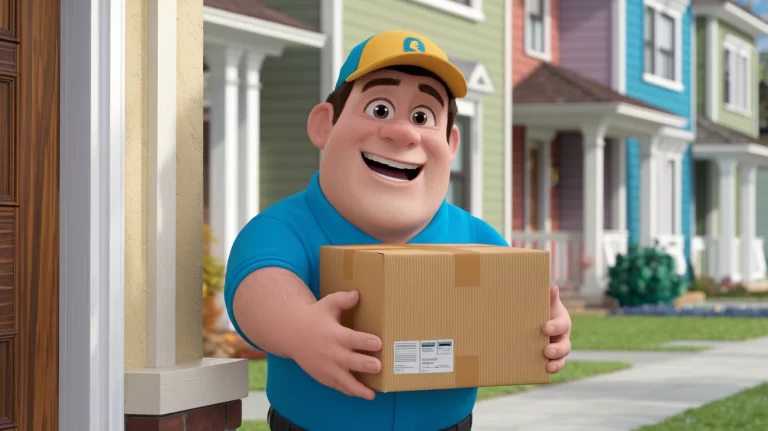When you decide to build a customer loyalty program, you’re making a strategic investment in your business’s future. You’re not just looking to hand out rewards; you’re aiming to craft an experience that makes customers loyal advocates. But where do you start? What sets a successful program apart from a mediocre one? As you consider the possibilities, you’re likely wondering what it takes to create a loyalty program that truly resonates with your customers and drives growth. Let’s explore the essential elements and best practices to help you get started.
Key Takeaways
Define clear objectives and key performance indicators (KPIs) to measure the program’s effectiveness and ensure it aligns with business goals.
Choose a loyalty program software that fits business needs, streamlining program management and tracking customer interactions seamlessly.
Develop a unique value proposition that sets the program apart from competitors and attracts loyal customers with relevant rewards and benefits. •
Focus on building a community for customers by getting creative with loyalty program features that foster engagement and encourage participation.
Clearly communicate the program’s benefits and rules to customers, setting expectations and verifying they understand how to earn and redeem rewards.
Understanding Customer Loyalty
When you think about customer loyalty, you’re likely considering how to encourage repeat business and turn one-time shoppers into loyal advocates, but vitally, you must comprehend that loyalty is a two-way street, requiring a deep understanding of your customers’ needs and preferences.
In the ecommerce space, customer loyalty is about building a connection with your customers, making them feel valued and appreciated. It’s not just about offering rewards, but about creating an experience that makes them want to come back for more.
To achieve this, you need to know what drives their loyalty. Research shows that 79% of consumers say customer loyalty programs make them more likely to continue doing business with a brand.
Benefits and Best Practices

By implementing a well-designed customer loyalty program, you can reap significant benefits, including a staggering 84% increase in customer retention, which can lead to substantial revenue growth and long-term business success.
This is vital, considering that acquiring new customers can be five to 25 times more expensive than retaining existing ones.
Running a customer loyalty program is often far more cost-effective than continually acquiring new customers, allowing you to leverage your existing customer base to drive repeat sales and positive word-of-mouth.
To build loyalty, focus on consistently delivering value to customers through exclusive offers and rewards, showing that you’re invested in their satisfaction.
Make sure at least 80% of transactions qualify for a star or point, and customers earn rewards within 30 days or less.
Offer meaningful rewards worth at least 10% of what they spent to earn them.
Personalize the experience with thank you notes and cards for holidays, and get creative with loyalty program features to build a strong connection with customers.
Creating a Customer Loyalty Program

Now that you’ve seen the benefits of a well-designed customer loyalty program, it’s time to create one that drives real results for your business.
When setting up a loyalty program, it’s crucial to define clear objectives and key performance indicators (KPIs) to measure its effectiveness and make data-driven decisions.
Choose a loyalty program software that fits your business needs, streamlining program management and tracking customer interactions.
Develop a unique value proposition that sets your program apart from competitors and attracts loyal customers.
Create a program that’s easy to understand and use, increasing customer engagement and participation.
Focus on the customer, not the competition, to build a loyal following that delivers value to customers.
Types and Features of Loyalty Programs

When it comes to designing a customer loyalty program, you’re faced with a range of options for rewarding your loyal customers.
You’ll want to weigh the merits of points-based programs, where customers accumulate points to redeem for cash back, discounts, or free items, as well as tiered rewards structures that offer increasing benefits as customers reach new levels.
Earn & Burn Programs
With every purchase, you earn a fixed number of points or rewards in an Earn & Burn program, which can be redeemed for rewards once you reach a specific threshold, making it a straightforward way to reward frequent customers. This type of loyalty program is often used in industries where customers make frequent, low-value purchases, such as coffee shops or convenience stores.
Earn & Burn programs are simple to understand and participate in, increasing customer engagement and loyalty.
According to a study, 77% of consumers belong to up to five Earn & Burn loyalty programs, making them a popular choice for businesses.
These programs typically don’t offer limited-time offers or tiered systems, focusing solely on rewarding customers for their purchases.
Tiered Rewards Structures
You can take your loyalty program to the next level by implementing a tiered rewards structure, which recognizes and rewards customers for their increasing levels of engagement and loyalty.
This type of program allows customers to advance through levels or tiers based on their purchases or engagement, revealing increasingly valuable rewards and benefits.
As customers move up the ranks, they can gain access to new benefits, such as exclusive discounts or priority customer service.
To be effective, tiered loyalty programs should have clear and achievable milestones for advancing to the next level, and rewards that are meaningful and desirable to customers.
By providing a sense of progression and accomplishment, tiered loyalty programs can encourage customers to increase their spending and engagement with your business.
Examples of successful tiered rewards structures include Sephora’s Beauty Insider program, which offers increasingly exclusive benefits and rewards as customers advance through three tiers.
Perks and Privileges
Perks and privileges are the icing on the cake in a loyalty program, offering customers exclusive benefits and rewards that make them feel valued and recognized.
As a business, you want to create a sense of belonging among your customers, and perks and privileges can help you achieve just that.
Early access to new products or services, giving customers a sense of exclusivity
Exclusive deals or discounts, making customers feel special and valued
Premium services or support, providing a personalized experience
Access to a loyal community, fostering a sense of belonging and connection
Designing and Optimizing a Program

Crafting a loyalty program that truly resonates with customers requires a thoughtful, data-driven approach that balances rewards, personalization, and clear communication.
When designing your program, consider implementing loyalty strategies that go beyond just purchase-based rewards. Instead, reward customers for various actions, such as watching product videos or engaging on social media. Certify your rewards are valuable and relevant to customers’ interests and values, with diversification to cater to different customer preferences and lifestyles.
To optimize your program, focus on building a community for customers and getting creative with loyalty program features, such as exclusive offers and early access to new products.
Clearly communicate the program’s benefits and rules to customers, setting expectations and verifying they understand how to earn and redeem rewards. By taking a data-driven approach, you’ll be able to reward the right customers for the right behavior, returning a profit while delivering high value to customers.
A successful loyalty program should offer meaningful rewards, with at least 80% of transactions qualifying for a star or point, and rewards worth at least 10% of what customers spent to earn them.
Loyalty Programs for Small Businesses

When it comes to small businesses, a well-designed loyalty program can be a game-changer, helping to level the playing field with larger competitors and driving revenue through increased customer retention and repeat purchases.
By implementing a loyalty program, you can increase customer engagement and satisfaction, leading to positive online reviews and word-of-mouth referrals that drive new business.
Increase customer retention and repeat purchases, leading to a significant increase in revenue and profitability
Collect valuable customer data to improve marketing efforts and tailor offers to individual customers
Compete with larger competitors by offering personalized rewards and incentives that build strong customer relationships
Drive new business through positive online reviews and word-of-mouth referrals
Implementing a Successful Program

To implement a successful customer loyalty program, you must define the program’s objectives and key performance indicators (KPIs) from the outset, as this will enable you to measure its effectiveness and make data-driven decisions. This is vital to understanding whether your program is driving customer loyalty and retention.
Implementation tips to keep in mind:
|
Implementation Tip |
Why It Matters |
|---|---|
|
Choose a loyalty program software that fits your business needs |
Streamlines program management and provides valuable insights |
|
Develop a unique value proposition that sets your program apart |
Differentiates your business and incentivizes customer participation |
|
Launch and promote the program to customers |
Generates buzz and encourages enrollment |
|
Provide exceptional customer service |
Fosters loyalty and builds credibility with customers |
|
Offer meaningful rewards that customers will actually want or use |
Creates a sense of value and appreciation |
Measuring and Improving Program Success

By regularly tracking and analyzing key performance indicators, such as customer retention rates and sales metrics, you can accurately measure the success of your loyalty program and identify areas for improvement.
This data-driven approach allows you to refine your program’s goals and objectives, verifying they remain specific, achievable, and aligned with your organization’s overall objectives.
To get a thorough picture of your program’s performance, consider tracking the following metrics:
Customer retention rates and average order value to refine the program and improve customer engagement
Customer feedback to adjust the loyalty program accordingly and verify it meets customer needs and expectations
Visit reports to understand customer behavior and loyalty program effectivenessSales reports to determine the program’s impact on revenue and identify opportunities for growth
Conclusion
You’ve got a solid foundation for a customer loyalty program that drives retention and revenue growth.
Now, it’s time to put your plan into action. Remember, a successful program is about creating an experience that resonates with your customers, not just offering rewards. Stay focused on their needs, continually optimize, and measure your progress.
With the right approach, you’ll be on your way to increasing customer retention by 84% and enjoying the financial benefits that come with it.









